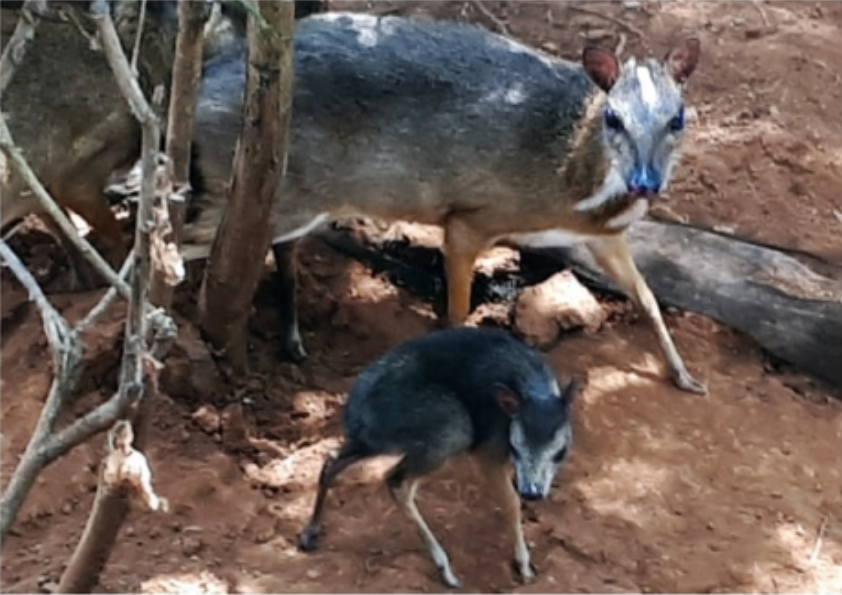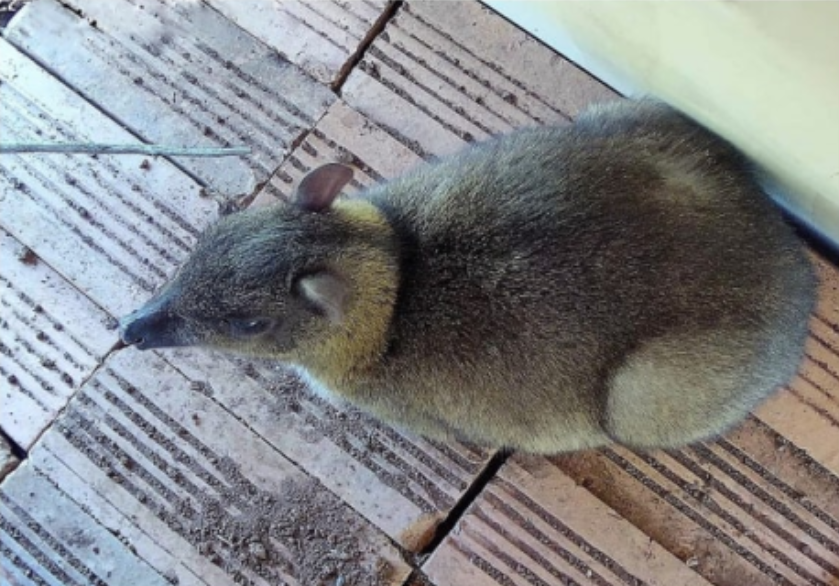
The study of the sleep-wake cycle of the mouse-deer showed that the parameters of sleep in these animals are unique and formed under the influence of a number of ecological factors of the rainforest. The work was carried out by the specialists of the A.N. Severtsov Institute of Ecology and Evolution RAS (IEE RAS).
These deer (Tragulus kanchil) live in the forests of South Asia and Africa. The weight of adult animals rarely exceeds two kg. These are the smallest of modern ungulates. They appeared on Earth approximately 40-50 million years ago, and are the only surviving of the known basal groups (organisms whose evolutionary line separated from the root before other groups) of artiodactyls.
These deer, the so-called "living fossils", have a number of features that are considered "archaic" for artiodactyls. Given their evolutionary status (the historical development of the organism), deer are of interest for comparative eco-physiological studies of sleep, as well as for testing several hypotheses about the function of sleep.

Employees of IEE RAS, together with foreign colleagues, studied the animals in Vietnam in the BuZyaMap National Park. Sleep was studied using the electrophysiological method. Indicators of brain activity (electroencephalogram, EEG), motor activity of muscles (electromyogram) and eyes (electrooculogram) were recorded, and the behavior of animals recorded on video was analyzed. During the experiments, the deer were in spacious enclosures, and physiological parameters were recorded using telemetry (wireless method of information transmission).
According to the authors, immobility is one of the most important signs of deer sleep. At the same time, the state of sleep, as a rule, is difficult to distinguish from calm wakefulness without registration of electrophysiological parameters.
The data obtained indicate that the features of the sleep-wake cycle in deer are determined primarily by environmental factors, such as high environmental temperatures, feeding habits, exposure to predators, as well as body size and physiology of deer.

“Unlike most other animals studied, which sleep with their eyes closed, the eyes of the deer were open for the most part of the sleep cycle. Other important features of deer are the twilight (crepuscular) nature of activity, polyphasic sleep, reduced cyclicity of sleep stages,” said Oleg Lyamin, a researcher at the IEE RAS.
Several previous studies have linked the low degree of differentiation (formation of a special phenotype) of sleep at its substage in animals with their "evolutionary age".
As scientists have established, sleep in deer is differentiated into substages similarly to the higher placentals (that is, in most mammals). The total amount of sleep (and the duration of the slow-wave sleep stage) in the smallest of the ungulates was a record for the entire group (about half the time of the day), and paradoxical (REM) sleep was, like other wild ungulates, very short (less than 25 minutes on average).
If the long duration of slow-wave sleep in deer is in good agreement with the idea of sleep as a state of adaptive immobility, which reduces or excludes animal activity when it is inappropriate or even harmful, then a small amount of the deepest stage of sleep, namely REM sleep, with a negative correlation between the duration of REM sleep and the security of animals during sleep.
The research results are published in one of the international scientific journals.
Related materials:
VC: "How do deer sleep?"
Science and life: "Sleep is for the weak"
